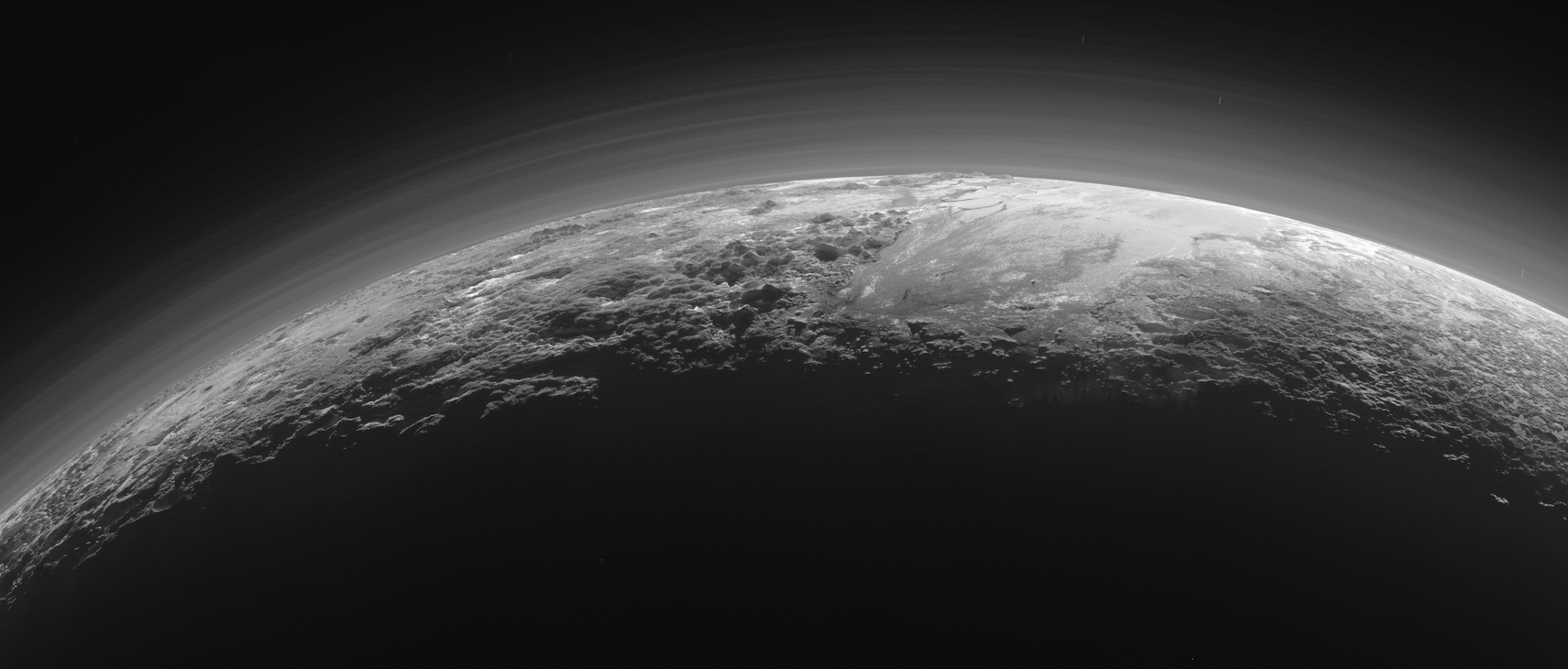
New images of Pluto from the New Horizons spacecraft were released today … and they are spectacular. The views across Pluto’s icy mountains and plains are haunting and almost surreal, yet familiar looking at the same time. What was once only a tiny pinpoint of light in the night sky is now a complex and fascinating world, in some ways similar to our own, seen close-up for the first time ever.
The images, from New Horizons’ wide-angle Ralph/Multispectral Visual Imaging Camera (MVIC), were taken on July 14 during the flyby and later downlinked to Earth on September 13. Taken only 15 minutes after closest approach, they are some of the most stunning views yet of this enigmatic world, showing both the varied terrain on the surface and multi-layered hazes in the atmosphere. The scene is reminiscent of arctic regions on Earth, yet distinctly alien at the same time. In the full-width panorama, the view covers 780 miles (1,250 kilometers), and the scene is dramatically enhanced by backlighting from the Sun.
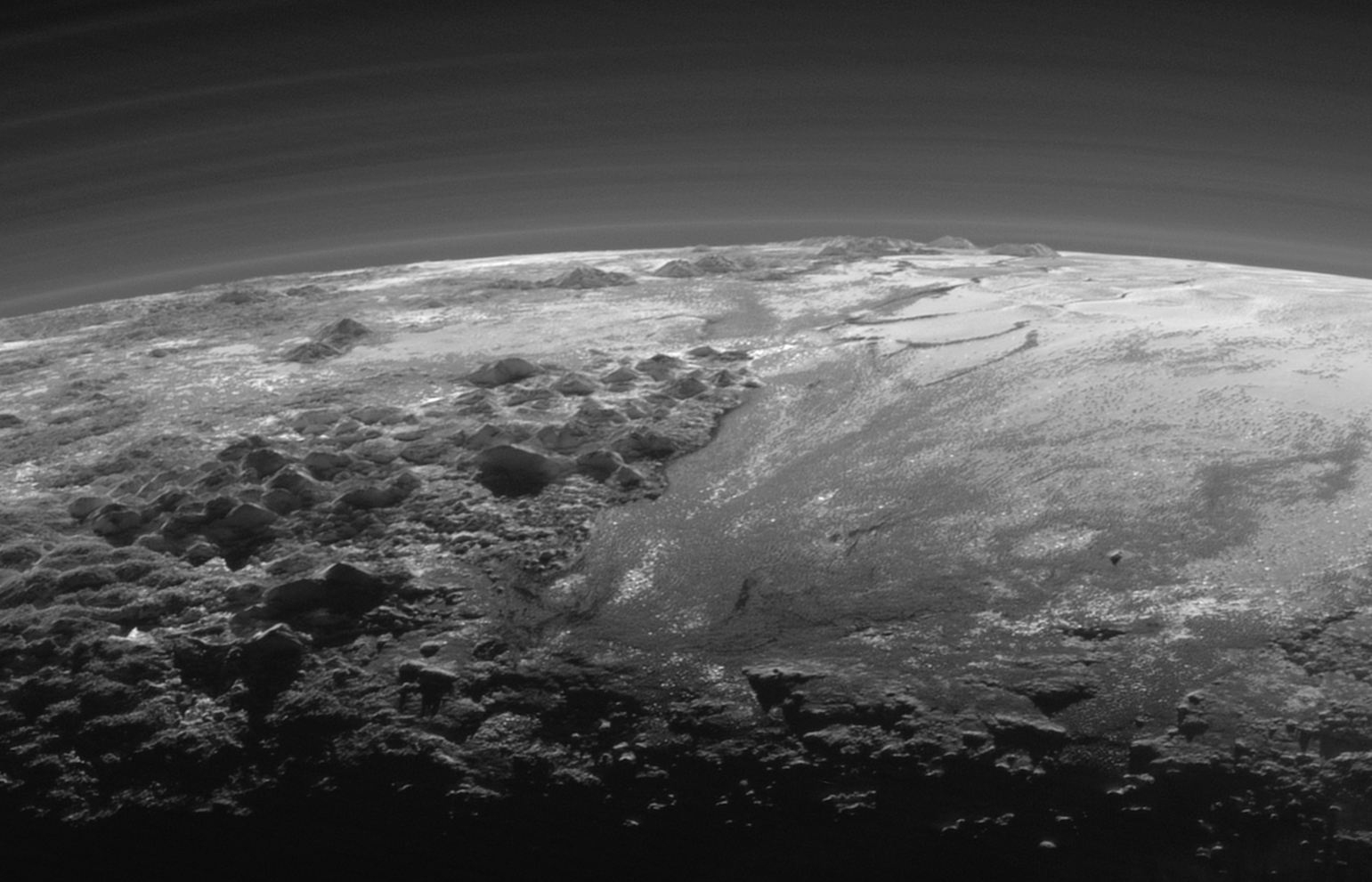
“This image really makes you feel you are there, at Pluto, surveying the landscape for yourself,” said New Horizons Principal Investigator Alan Stern, of the Southwest Research Institute, Boulder, Colo. “But this image is also a scientific bonanza, revealing new details about Pluto’s atmosphere, mountains, glaciers and plains.”
The incredible full-resolution version of the panoramic image (3420 x 1460) can be seen here.
More than a dozen layers can be seen in the atmospheric hazes; Pluto’s atmosphere, mostly nitrogen, is very tenuous, but extends high above the surface of the dwarf planet. The hazes extend from near the ground to at least 60 miles (100 kilometers) above the surface. Other low-lying, fog-like hazes can also be seen in the new images.
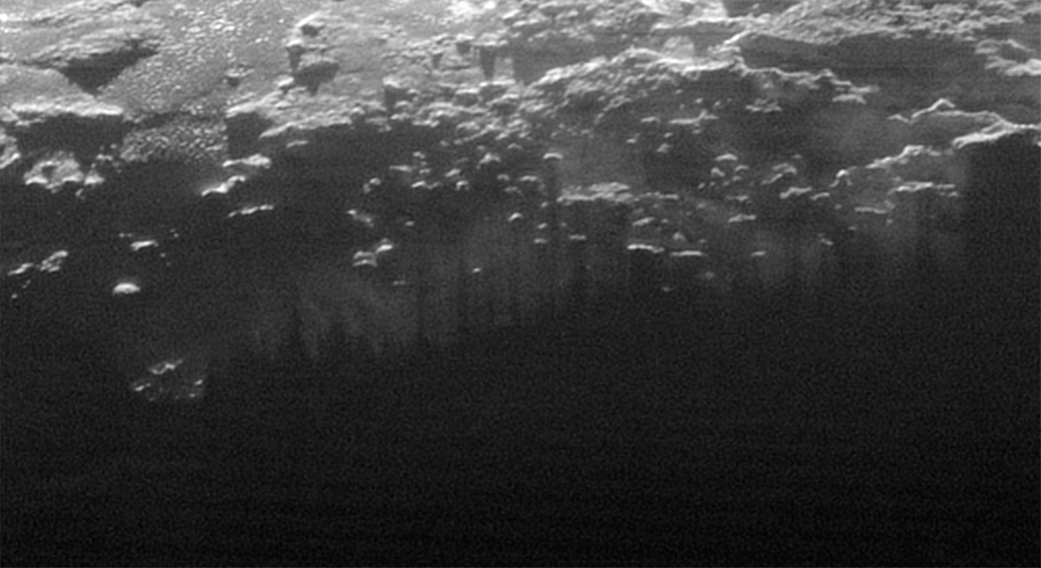
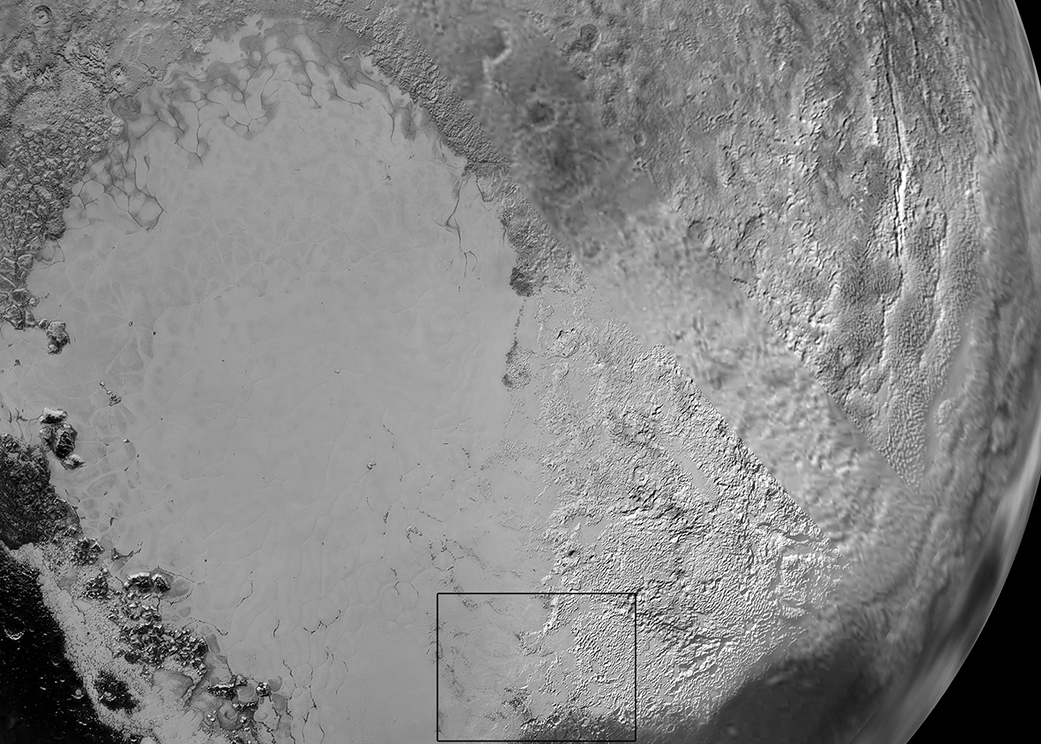
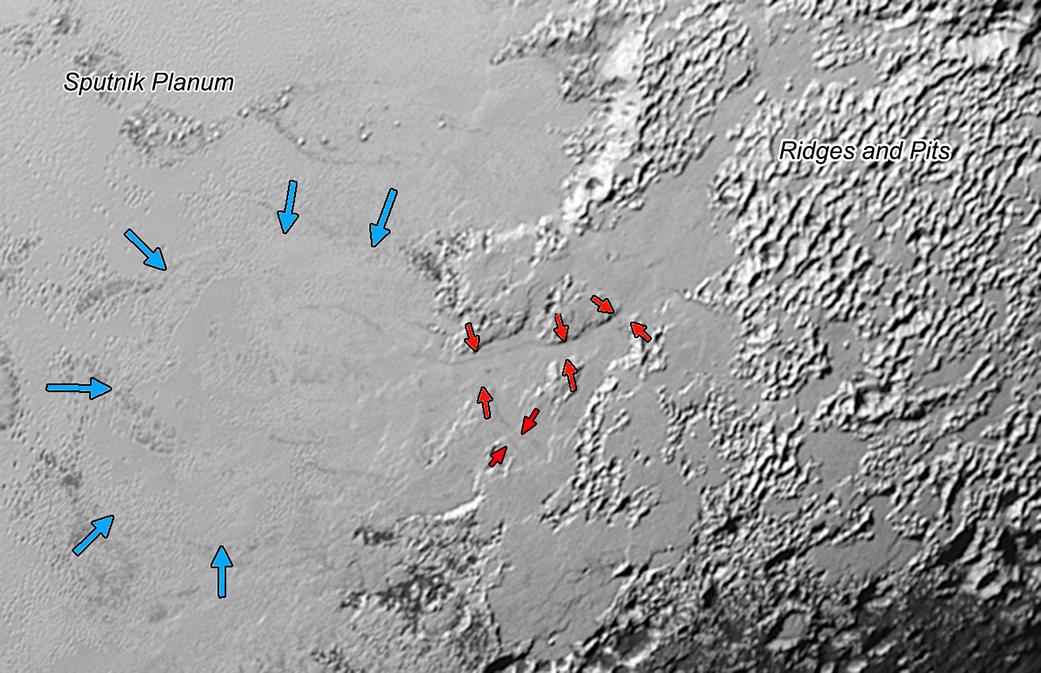
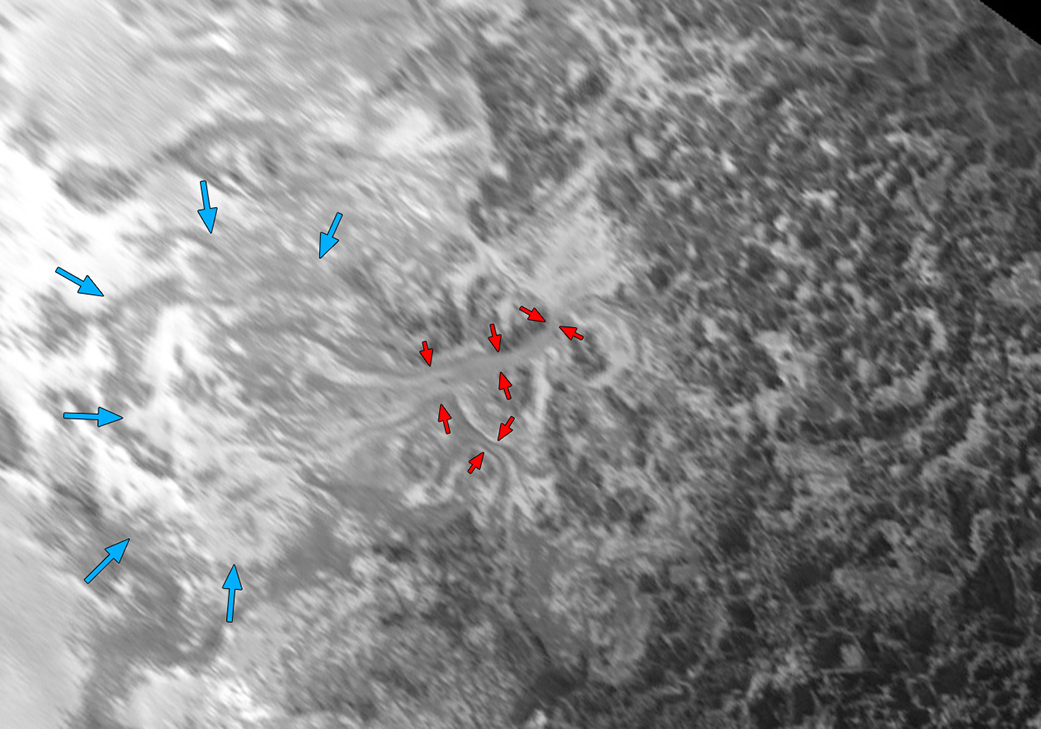
The images also provide more evidence for a “hydrological” cycle on Pluto, but with soft and exotic ices, including nitrogen, instead of water ice. This cycle may be Earth-like in appearance, but is uniquely alien to Pluto in terms of the processes involved.
“In addition to being visually stunning, these low-lying hazes hint at the weather changing from day-to-day on Pluto, just like it does here on Earth,” said Will Grundy, lead of the New Horizons Composition team from Lowell Observatory, Flagstaff, Ariz.
As seen in these and previous images, the ices cover large areas of the plains regions on Pluto, such as Sputnik Planum, in sharp contrast to the much more rugged and mountainous terrain elsewhere. Plutonian glaciers flow into the outer regions of these plains from the more heavily blanketed areas, similar to frozen streams on the margins of ice caps on Greenland and Antarctica.
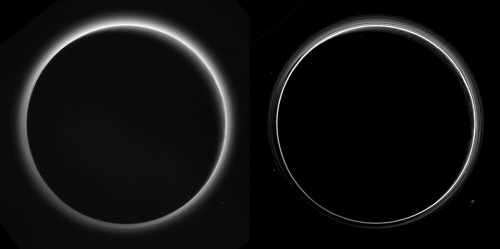
The presence of such exotic features were a surprise to planetary scientists.
“We did not expect to find hints of a nitrogen-based glacial cycle on Pluto operating in the frigid conditions of the outer solar system,” said Alan Howard, a member of the mission’s Geology, Geophysics and Imaging team from the University of Virginia, Charlottesville. “Driven by dim sunlight, this would be directly comparable to the hydrological cycle that feeds ice caps on Earth, where water is evaporated from the oceans, falls as snow, and returns to the seas through glacial flow.”
“Pluto is surprisingly Earth-like in this regard,” added Stern, “and no one predicted it.”
In previous images, it could be seen that there were at least five haze layers in the atmosphere, but in the new images it is apparent that there are many more than that. The mountains seen in the new images extend up to 11,000 feet (3,500 meters) high, with Norgay Montes in the foreground and Hillary Montes on the skyline.
In some ways, Pluto is similar to Saturn’s largest moon Titan, where hydrological processes also mimic those on Earth, but with liquid methane/ethane instead of water. Titan has rivers, lakes, seas, and rain, but it is much different from what we experience here on our own planet. As with Pluto, the processes look eerily familiar, except that the materials and chemistry involved are completely different.
The new images, with many more yet to come, continue to show Pluto as an active and dynamic world, despite being so small and far from the Sun. As with virtually all other planetary exploration missions, there are always surprises, and Pluto is no exception.
New Horizons is now continuing its journey into the Kuiper Belt and will reach its next target, the tiny 2014 MU69, on Jan. 1, 2019. See the New Horizons website for much more information about what New Horizons has found so far and what is still to come.
Want to keep up-to-date with all things space? Be sure to “Like” AmericaSpace on Facebook and follow us on Twitter: @AmericaSpace
Missions » New Horizons »



The Norgay Montes photo is eerily Earth-like. It is almost haunting that such a distant planet thought to be just an “ice world” could be so interesting and a wealth of scientific information.